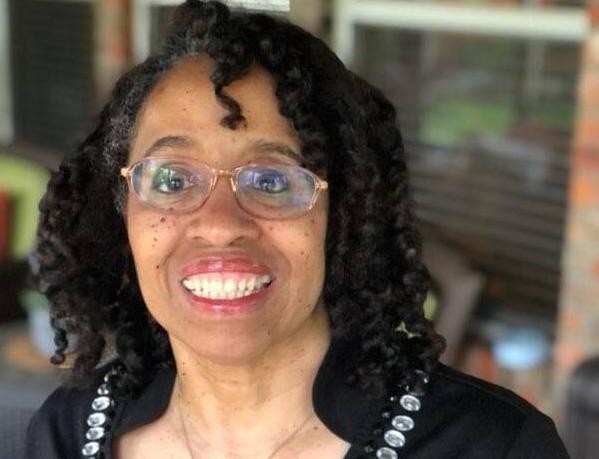 Since 1827, black journalists and newspapers have played an indispensable role in enlightening and informing black communities. From the unique perspective of Black journalists and editors, these newspapers provide realistic representation of Black people, elevate Black culture, and cultivate the Black community. Whether in pursuit of social justice or to increase social consciousness, black newspapers continue to serve the large, diverse and ever-growing community of black people across the country.
Since 1827, black journalists and newspapers have played an indispensable role in enlightening and informing black communities. From the unique perspective of Black journalists and editors, these newspapers provide realistic representation of Black people, elevate Black culture, and cultivate the Black community. Whether in pursuit of social justice or to increase social consciousness, black newspapers continue to serve the large, diverse and ever-growing community of black people across the country.
This Black History Month, PEN America is highlight the careers of black writers who work to reveal the truth about life and justice in the United States. Their presses remain essential to the functioning of democracy and a thriving culture. We asked Black journalists about the importance of Black-owned media, positive Black stories, and the historical context of their work.
THE American from St. Louis has been the most trusted voice of Missouri’s African American community for nearly 100 years. Dedicated to provide a unique and respected forum that gives African Americans a credible voice, the American from Saint-Louis, with its expanded multimedia platform, is now the largest weekly newspaper in the entire state of Missouri.
The following is an interview with Karen Jacobseconomic journalist at American from St. Louisworking within the framework of Report for America And Type surveys programs. The interview has been condensed and edited for clarity.
Why did you decide to become a journalist and what was your professional journey?
I was born and raised in Chicago, which during my youth was home to at least four daily newspapers, most of which were delivered to my home daily. So I come from a newspaper town. I studied journalism in high school, majored in journalism and economics at the University of Illinois, and dedicated my career to telling stories that matter to the local communities of Champaign, Illinois. Milwaukee, Los Angeles, Dallas and St. Louis.
Do you have a favorite article that you have published since you started with the American from St. Louis? What is it and why is it your favorite piece?
I have several pieces that I am particularly proud of. Aside from Barren Mile, I am proud to report that I directed examine the impact of a $1.7 billion government project on communities of color and low-income communities. I tried to stay focused on: What do these groups get out of this deal? I asked tough questions about past and planned spending, ensuring that the needs of underrepresented groups were not simply brushed aside.
“I asked tough questions about past and planned spending, ensuring that the needs of underrepresented groups are not simply pushed aside. »
Can you tell me a little about the Barren Mile Project and your coverage of food shortages in Black communities during the pandemic?
I’m at The American of Saint-Louis as part of the national campaign Program Report for America which seeks to place journalists in underrepresented communities. In Barren Mile, four Black newspapers sought to shine a light on food insecurity and other food injustice issues made worse by the pandemic. The government and local charities mobilized to avert what could have been a humanitarian crisis. But systemic problems, including severe disinvestment in communities of color, remain.
Why are black newspapers so important?
The mission of the black press has not changed much since the beginnings of Freedom Journal. Black successes and accomplishments are often overlooked in mainstream media and deemed not newsworthy. This leads to an inaccurate portrayal of black people as largely criminals and people in need of help. Having media that primarily focuses on stories through a Black lens ensures that a more complete picture emerges.
What can people do to best support the work you do?
Local newspapers in general and minority-owned publications in particular need not only financial support, but also that of prominent people of color. Too often I have seen a celebrity or well-known person respond to a call from the national media and not respond to me at all. Obviously, the reach of national media is broader, but local news and minority media often existed before the person became so high profile. It’s frustrating that we forget it so quickly.
“For the Black press, our North Star has always been serving communities of color, to a granular degree that is not achievable for the mainstream press.»
How The American of Saint-Louis maintain its relevance to readers?
One of the challenges facing the mainstream press is that the traditional audience, educated middle- and upper-income readers, is shrinking while young people and people of color are turning to other sources for news. For the Black press, our North Star has always been serving communities of color, to a granular degree that is not achievable for the mainstream press. We hold job promotion announcements, professional industry awards, and other events that are very important to individuals but seemingly less newsworthy to a broader audience. And The Americans of Saint-Louis the public remains intensely loyal.
That said, it remains difficult for almost all media to keep the spotlight on. We’ve left jobs vacant and cut back on extras, although the newspaper foundation continues to offer scholarships.
As with most media, digital is extremely important to our future. We are eagerly watching the landscape to see who is coming up with a digital strategy that can turn the tide.
This interview was conducted by PEN across America program. Within the broader PEN America organization, the PEN Across America initiative provides resources to mobilize PEN America communities nationwide to continue our mission of defending and celebrating free expression.


